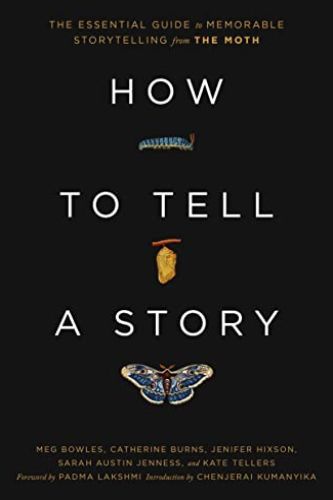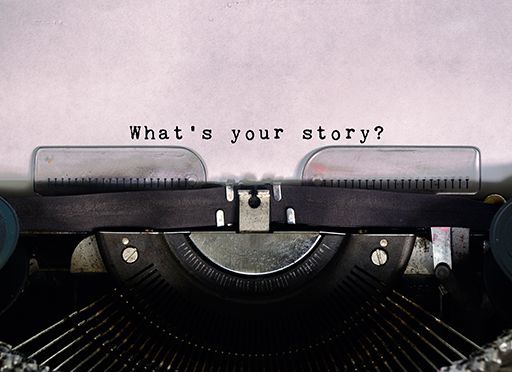The directors of storytelling organization The Moth – Meg Bowles, Catherine Burns, Jennifer Hixson, Sarah Austin Jenness and Kate Tellers – teach the art of compelling, empathetic storytelling.

You Are Your Story
The directors of The Moth, a nonprofit organization that showcases people telling their stories, teach you how to select, structure and give life to your personal narratives, overcome stage fright and inspire audiences. Storytelling is an art and a powerful tool that can change individual lives or trigger entire social movements, explain Meg Bowles, Catherine Burns, Jennifer Hixson, Sarah Austin Jenness and Kate Tellers.
Empathy and Community
The Moth, a story-sharing event launched in New York in the 1990s, has grown into a global institution dedicated to building community and connection through storytelling. Relaying a compelling story means sharing something true with authenticity that helps your audience connect and empathize.
Stories explain your heart, decode your history, decipher who you are, and translate it all to whoever takes the time to listen carefully. Meg Bowles et al.
The directors of the Moth have several rules and guidelines for delivering a story: Describe a true event that happened to you; don’t retell someone else’s experience. Your story should feature something to be gained or lost, or relay an event that created a moment of conflict in your life. Take no more than five minutes to tell your story. Never imitate accents or mock someone’s identity – for example, body type, class or race. Racism and hate speech are strictly prohibited. Always tell your story from memory without notes or props.
Transformative Moments
Consider your most unforgettable memories, urge Bowles et al. Think back to an incident that required you to make a conscious choice. Was there a moment, or “inciting incident,” that set a chain of events in motion or changed the course of your life? Think of times when you broke a pattern or disrupted your normal routine, perhaps with surprising results. Your story must involve a shift in your perspective, big or small – for example, coming to terms with a heartbreak.
When someone makes themselves vulnerable, the listener leans in, and a quiet bond is formed. It’s trust.Meg Bowles et al.
Sharing mistakes and painful moments connects you with your audience and establishes trust. Don’t fixate on your trauma; instead, focus on the transformation your pain triggered.
Stakes
The Moth’s directors invite readers to share stories about times in their lives when something important was at stake. Stakes can deal with internal tensions inside your mind – for example, the narrator worries he will die alone – or external factors – for instance, an angry neighbor threatens you.
Stakes are defined by you, the teller – not your mother, brother, sister or friend – and are born out of what you want/need/must have/can’t live without or desperately want to avoid.Meg Bowles et al.
Reflect on how the events of your story changed you. Distill your narrative into a single sentence to discover the core of its meaning for you. A story that lacks stakes – in that you, as the protagonist, don’t need or want anything, or you don’t undergo an experience or transformation of some sort – is simply an anecdote, a string of amusing or interesting occurrences that lacks depth.
Details
Make a bullet list of the essential narrative moments leading up to your transformation or revelation. Include any details listeners need to understand your tale. Avoid overwhelming listeners with too many dates, names, characters, irrelevant details or graphic descriptions. Show, don’t tell. For example, rather than describing a character as “eccentric,” quote them saying something that reveals their eccentricity.
You, right now, are all the stories that came before you.Meg Bowles et al.
Describe scenes from your past as though they’re happening in the present moment. Illuminate that moment with sensory details, such as a particular smell or the feel of a fabric, for example.
To resolve your story, identify the crucial moment that triggers your character’s transformation. Show listeners how your character is a different person by the end of your story than he or she was at the beginning of it.
Emotional, Vulnerable Moments
Describe your emotional stakes. Everyone reacts to situations differently, but most listeners understand what it’s like to feel love or embarrassment, for example. Depicting emotions helps listeners to grasp the severity or urgency of the predicament you face.
Emotions are our common denominator. Listening to a story that is absent of emotion is like hearing an instruction manual read aloud.Meg Bowles et al.
If you describe something traumatic that you haven’t yet processed, you may not have adequate command of your emotions. Tell stories about difficult, traumatic events only when you know you have sufficient perspective and critical distance to tell the story freely, without triggering your own pain or trauma.
Storytelling Styles
The Moth’s directors describe several clever ways to structure a story. Chronological stories allow events to transpire sequentially. Two simultaneous chronologies allows your storytelling to jump from one narrative to another as both lead to the same thematic conclusion. Flashbacks jump back to a past event to create context. You can start your story with a cliffhanger or weave shorter flashbacks throughout your story. Or you could choose a unique perspective, such as narrating your story from the eyes of your childhood self.
Choose a memorable moment for your opening. Make sure your ending satisfies listeners and that you have a definite stopping point. Your ending should resolve your central narrative conflict.
Authentic
Does your narrative arc have a natural flow? Perhaps you said something in two sentences you could condense into one. Incorporate moments of quiet to punctuate meaningful plot points.
Don’t try to recite your story word-for-word each time you tell it; your story is a living entity; incorporate different details into each telling.
Nerves often arise when people worry about screwing up their stories. But we have good news: The only way to really fail is to think that there is only one right way to tell a story.Meg Bowles et al.
Calm and ground yourself on stage by standing taller, breathing deeply or taking a sip of water. Confess to the audience that you’re nervous if you’re experiencing jitters; nerves mean you care.
The Power of Stories
The Moth began as a small collaborative endeavor. When the directors realized how much people needed to tell stories and how much people needed to hear them, they recognized the power of connective empathy. Unlike most contemporary gurus of public speaking, the authors do not focus on the speaker but on the story, which connects you to any audience, regardless of your subject. That focus – and the directors’ passion for the art of storytelling – makes this a brilliant, transformative guide.




